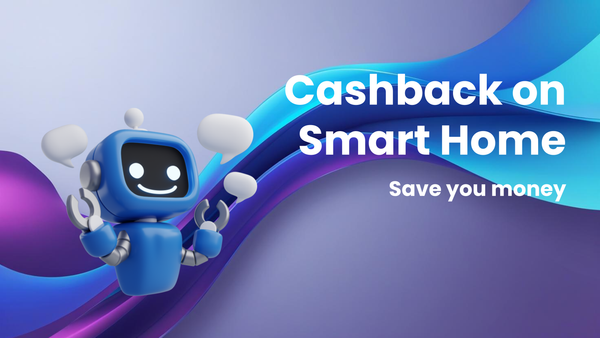Insider Hacks for Zero-Cost API Upgrade Deals

Insider Hacks for Zero-Cost API Upgrade Deals
Imagine this: you're running a growing business, heavily reliant on APIs to power your core functionalities. Suddenly, the API provider announces a mandatory upgrade – one that promises better performance and new features, but also comes with a hefty price tag. Panic sets in. How can you afford this upgrade without breaking the bank? This scenario, unfortunately, is far too common. Many businesses face the daunting prospect of API upgrades, often perceiving them as unavoidable expenses. But what if there was a way to navigate these upgrades strategically, even turning them into opportunities for cost savings and enhanced functionality?
This article delves into the world of API upgrades, revealing insider hacks to secure favorable deals, even achieving zero-cost upgrades. We will explore the underlying dynamics of API pricing, negotiation strategies, and innovative alternatives that can empower you to take control of your API infrastructure and minimize expenses. Forget the notion of upgrades as budget busters. Learn how to leverage these transitions to your advantage.
I. Understanding the API Upgrade Landscape
An API (Application Programming Interface) is essentially a messenger, enabling different software systems to communicate and exchange data. They are the backbone of countless applications, powering everything from social media integrations to payment processing. API upgrades are inevitable. Providers need to enhance security, improve performance, introduce new features, and keep pace with evolving technological standards. However, these upgrades often come with increased costs, potentially straining budgets and impacting profitability.
Think of your website's weather widget. It pulls data from a weather API. If the API provider upgrades to a more sophisticated data model delivering hyper-local weather patterns and predictive analytics (a definite plus for your user experience!), they'll likely pass the development and maintenance costs down to you.
Why API Upgrades Matter
API upgrades are crucial for several reasons:
- Security: Addressing vulnerabilities and protecting against evolving cyber threats. Outdated APIs are prime targets for malicious attacks.
- Performance: Enhancing speed, reliability, and scalability to meet growing demands.
- Functionality: Introducing new features, improved data handling, and better integration capabilities.
- Compatibility: Ensuring seamless interaction with other systems and platforms.
- Compliance: Adhering to industry standards and regulatory requirements.
Failing to upgrade can lead to security breaches, performance bottlenecks, compatibility issues, and ultimately, a degraded user experience. However, simply accepting the provider's initial upgrade terms can be a costly mistake.
II. The Anatomy of API Pricing and Negotiation
Understanding how API providers structure their pricing is the first step towards securing a better deal. Common pricing models include:
- Usage-Based: Charges based on the number of API calls, data volume, or transactions.
- Tiered: Different pricing tiers based on usage levels, features, or support.
- Subscription: Fixed monthly or annual fee for access to the API.
- Freemium: Free limited access with paid upgrades for additional features or usage.
API providers have costs that they must cover – infrastructure, support, development, sales. However, the exact margin they aim to obtain on each deal can vary greatly depending on the perceived strategic importance of the client, the competition, the complexity of the upgrade required, and the urgency of the upgrade implementation.
The Art of Negotiation: Strategies for Zero-Cost Upgrades
Negotiation is not about confrontation, but about finding mutually beneficial solutions. Here are some insider strategies to leverage:
- Start Early and Be Informed: Don't wait until the last minute. Initiate discussions well in advance of the upgrade deadline. Research alternative providers and their pricing models to gain leverage. Presenting data on competitor pricing immediately weakens the provider's opening position.
- Example: If your current provider offers an upgrade to their mapping API with a 30% price increase, research alternatives like Mapbox or HERE Technologies. Presenting their competitive pricing and features during negotiations can significantly influence your current provider's offer.
- Highlight Your Value as a Customer: Emphasize your long-term relationship, loyalty, and potential for future growth. Mention any positive testimonials or case studies featuring their API. Let them know that you’re a great customer that they don’t want to lose.
- Example: "We've been a customer for five years and have consistently driven significant traffic to your API, showcasing its value to our users. We are also planning to expand our application to new markets, which will further increase API usage and potentially attract new customers to your platform."
- Negotiate on Specific Features: Are all the new features in the upgrade essential for your needs? Request a customized package that includes only the features you require, potentially reducing the overall cost. Ask for a detailed breakdown of the cost associated with each feature.
- Example: If the upgrade includes advanced analytics features that you don't currently use, negotiate to exclude those features from your package and receive a lower price.
- Explore Alternative Pricing Models: Instead of a fixed subscription fee, explore usage-based pricing or tiered options that align better with your actual consumption patterns.
- Offer Co-Marketing Opportunities: Propose co-marketing initiatives, such as featuring the API provider in your blog posts, case studies, or webinars, in exchange for a discounted upgrade. This gives the provider exposure and reinforces your value as a client.
- Phase the Upgrade: Instead of implementing the entire upgrade at once, request a phased approach to spread out the costs over time. This also allows you to test and validate the new features before committing to the full upgrade.
- Example: Negotiate to implement security patches and performance improvements immediately, while deferring the integration of new features until a later stage.
- Seek Sponsorship or Funding: Explore potential sponsorship or funding opportunities, especially if the upgrade aligns with broader industry initiatives or research projects. Certain foundations and government programs may provide grants for technology upgrades.
- Threaten to Switch (Carefully): This is a high-risk, high-reward strategy. If you've done your research and have a viable alternative lined up, politely inform your provider that you're considering switching due to the upgrade cost. Be prepared to follow through if necessary, but use this tactic sparingly.
- Caution: Only use this as a last resort and ensure you have a realistic alternative. Bluffs can damage relationships and backfire.
- Bundle with Other Services: If you're using other services from the same provider, bundle the API upgrade with those services to negotiate a more favorable overall price. Leverage your total spending to gain bargaining power.
- Example: If you're using the provider's cloud storage and CDN services, bundle the API upgrade with these services to negotiate a comprehensive package deal.
- Pilot Programs and Beta Testing: Offer to participate in pilot programs or beta testing of the upgraded API in exchange for a discounted or free upgrade. This provides the provider with valuable feedback and testing resources while reducing your costs.
- Example: "We'd be happy to be a beta tester for your upgraded API and provide detailed feedback on its performance and usability. In exchange, could we receive a discounted upgrade or free access for a limited period?"
- Request a Grace Period: Ask for a grace period after the upgrade is implemented to assess its performance and impact on your systems before incurring any costs. This allows you to identify and address any issues before committing to the upgrade.
Example Case Study: Securing a Zero-Cost Upgrade
A mid-sized e-commerce company, "ShopSmart," relied heavily on a third-party API for inventory management. When the API provider announced a mandatory upgrade with a 40% price increase, ShopSmart's CTO, Sarah, initiated negotiations early.
- Research: Sarah researched alternative inventory management APIs, identifying a competitor with comparable features at a lower price point.
- Value Proposition: She highlighted ShopSmart's five-year relationship with the provider, emphasizing their consistent API usage and positive feedback.
- Feature Negotiation: Sarah identified several new features in the upgrade that were not immediately relevant to ShopSmart's needs.
- Co-Marketing: She proposed a case study showcasing how ShopSmart successfully leveraged the API to optimize inventory management, offering valuable publicity for the provider.
After several rounds of negotiations, the API provider agreed to a customized package that excluded the unnecessary features and included the case study as compensation for the upgrade cost, resulting in a zero-cost upgrade for ShopSmart.
III. Beyond Negotiation: Exploring Alternative Solutions
While negotiation is a powerful tool, exploring alternative solutions can provide even more significant cost savings and flexibility.
- API Aggregation: Consider using an API aggregation platform that consolidates multiple APIs into a single interface. These platforms often offer cost-effective pricing models and can simplify integration efforts.
- Example: Instead of directly integrating with multiple social media APIs, use an API aggregation platform like Apilayer to access data from various platforms through a single API.
- Open-Source APIs: Explore open-source API alternatives that are free to use and customize. This requires technical expertise but can offer significant cost savings and control.
- Example: Instead of using a paid geocoding API, explore open-source alternatives like Nominatim.
- In-House Development: If you have the resources and expertise, consider developing your own API to replace the third-party API. This provides complete control over functionality and pricing but requires significant upfront investment.
- Example: If you require a highly customized API for internal data processing, consider developing your own API using frameworks like Flask or Django.
- Serverless Computing: Leverage serverless computing platforms like AWS Lambda or Google Cloud Functions to reduce infrastructure costs associated with API usage. Serverless computing allows you to pay only for the resources you consume, eliminating the need for dedicated servers.
- Example: Use AWS Lambda to process API requests and transform data, reducing the need for a dedicated server and associated infrastructure costs.
- API Caching: Implement API caching to reduce the number of API calls and minimize usage-based costs. Caching stores frequently accessed data locally, reducing the need to retrieve it from the API provider each time.
- Example: Use a caching mechanism like Redis to store frequently accessed API data, reducing the number of API calls and minimizing usage-based costs.
IV. Common Pitfalls to Avoid
While striving for zero-cost upgrades, avoid these common pitfalls:
- Compromising Security: Don't sacrifice security for cost savings. Prioritize security patches and updates, even if they come with a price tag.
- Ignoring Performance: Avoid upgrades that significantly degrade performance. Ensure the upgraded API meets your performance requirements.
- Vendor Lock-In: Be wary of providers that make it difficult to switch to alternative APIs. Maintain flexibility and avoid becoming overly reliant on a single provider.
- Lack of Due Diligence: Thoroughly research and test the upgraded API before committing to it. Ensure it meets your requirements and integrates seamlessly with your systems.
- Burning Bridges: Aggressive negotiation tactics can damage relationships with providers. Strive for mutually beneficial solutions that maintain a positive working relationship.
V. Future Trends in API Pricing and Upgrades
The API landscape is constantly evolving. Keep an eye on these emerging trends:
- AI-Powered APIs: Expect to see more AI-powered APIs offering advanced functionalities like natural language processing and machine learning.
- Blockchain-Based APIs: Blockchain technology is enabling secure and transparent API interactions.
- Microservices Architecture: The rise of microservices architecture is driving demand for more specialized and modular APIs.
- Dynamic Pricing Models: API providers are increasingly adopting dynamic pricing models that adjust based on demand, usage patterns, and market conditions.
Understanding these trends will help you anticipate future upgrade requirements and negotiate favorable deals.
Conclusion
Securing zero-cost API upgrades is not just a pipe dream. It's an achievable goal through strategic negotiation, exploration of alternative solutions, and a proactive approach to API management. By understanding the dynamics of API pricing, highlighting your value as a customer, and exploring alternative solutions, you can take control of your API infrastructure and minimize expenses.
The key takeaway? Be proactive, be informed, and be prepared to negotiate. Don't simply accept the provider's initial offer. Question it, challenge it, and explore alternative solutions. The rewards of your efforts can be significant, resulting in substantial cost savings and a more resilient and scalable API infrastructure.
Next Steps:
- Audit your current API usage: Identify your most critical APIs and their associated costs.
- Research alternative providers: Explore potential alternatives and compare pricing models.
- Initiate early negotiations: Start discussions with your current provider well in advance of any planned upgrades.
- Develop a negotiation strategy: Outline your key objectives and tactics.
- Explore alternative solutions: Consider API aggregation, open-source APIs, or in-house development.
By taking these steps, you can position yourself to secure favorable API upgrade deals and optimize your API infrastructure for long-term success. The future of your business may depend on it.




